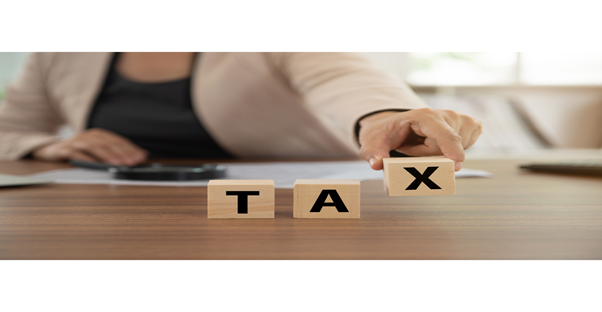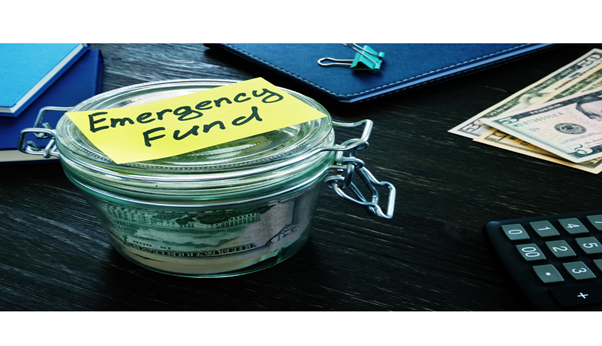Introduction
In today’s unpredictable world, it is essential to be prepared for unexpected financial challenges that may arise. Whether it’s a medical emergency, sudden job loss, or unforeseen repair costs, having an emergency fund in place can provide a much-needed safety net during times of crisis. An emergency fund is a savings account earmarked to cover unforeseen expenses, helping individuals and families navigate through difficult times without resorting to debt or disrupting long-term financial goals. This guide explores effective emergency fund-building techniques, equipping you with the knowledge and tools necessary to establish a solid financial foundation. By applying these strategies, you can protect yourself and your loved ones from financial stress.
- First, we will delve into the importance of emergency funds and why they should be a priority in your financial planning. Understanding the significance of having a cushion of savings can motivate you to take the necessary steps to establish and grow your emergency fund.
- Next, we will explore practical tips for setting financial goals and creating a budget that includes regular contributions to your emergency fund. By assessing your income, expenses, and economic priorities, you can find the areas where you can cut back and allocate funds toward building your emergency fund.
We will also discuss various saving techniques and strategies, such as automating savings transfers, seeking additional sources of income, and taking advantage of tax advantage accounts. These methods can help accelerate the growth of your emergency fund while making the saving process more manageable and less burdensome. By applying these techniques outlined in this guide, you will be well on your way to establishing a robust emergency fund that can give you peace of mind and financial security for the future. Let’s begin this journey towards a more secure financial end by exploring the most effective emergency fund-building techniques.
Understanding the Importance of an Emergency Fund

An emergency fund is a component of financial stability and preparedness. It is a safety net during unexpected events like job loss, medical emergencies, or major repairs. An emergency fund also helps prevent debt accumulation, allowing you to maintain your long-term financial goals and weather any economic storms that may come your way.
Setting Financial Goals and Creating a Budget

Setting financial goals and creating a budget are crucial steps in building an emergency fund. Start by identifying your short-term and long-term objectives. Determine the specific amount you want to save for your emergency fund and set a realistic timeline to achieve this goal. Next, create a comprehensive budget that outlines your income and expenses. Analyze your spending patterns and identify areas to cut back or reduce unnecessary costs. Allocate a specific portion of your income towards your emergency fund and prioritize it in your budget. Setting clear goals and creating a budget establishes a framework for disciplined saving and ensures that your emergency fund receives consistent contributions. Regularly reviewing and adjusting your budget will guide you to stay on track and make necessary corrections as your financial situation evolves. Remember, every dollar saved brings you closer to achieving your emergency fund target.
Prioritizing Regular Contributions to Your Emergency Fund
Regular contributions to your emergency fund are essential for its growth and effectiveness. Treat it as a financial obligation and prioritize it alongside other expenses. Set up automatic transfers from your checking account to your emergency fund to ensure consistency. Start with a realistic contribution amount that fits your budget and gradually increase it over time. Consider it as paying yourself first, ensuring your future financial security is handled. Look for opportunities to redirect windfalls or extra income toward your emergency fund. By consistently allocating funds to your emergency fund, you build a habit of saving and creating a safety net for unexpected situations. Avoid dipping into the fund for non-emergency expenses unless necessary. Stay committed to your contribution schedule, even

during periods of financial stability, as it helps maintain the fund’s growth and reinforces responsible economic behavior. Remember, consistently small contributions can add to a substantial emergency fund over time.
Leveraging Saving Techniques and Strategies

Leveraging various saving techniques and strategies can greatly enhance your efforts to build an emergency fund. One effective approach is to automate your savings by setting up transfers from your paycheck to your emergency fund. It eliminates the temptation to spend money and ensures consistent contributions. Another technique is to practice mindful spending and identify areas to reduce expenses. Adopting frugal habits and making conscious choices can redirect those savings toward your emergency fund.
Additionally, consider your savings potential. Please take advantage of windfalls or unexpected funds by directing a portion of them toward your emergency fund. It is also beneficial to explore high-yield savings accounts or other investment options that offer better returns on your savings. Finally, consider adopting a “pay yourself first” mentality, where you prioritize your emergency fund contributions before allocating funds to discretionary spending. Implementing these strategies can accelerate your emergency fund growth and achieve financial peace of mind.
Automating Savings Transfers for Consistency

Automating savings transfers is a powerful technique to ensure consistency and steady growth of your emergency fund. By setting transfers from your primary checking account to your designated savings or emergency fund account, you remove the burden of manually moving the money and make saving effortless. This method allows you to treat your savings as a non-negotiable expense, similar to paying bills. Choose a frequency for the transfers that align with your financial situation and goals, whether monthly, bi-weekly, or with each paycheck. Automating savings transfers simplifies the saving process and eliminates the temptation to spend money impulsively. Over time, these regular contributions add up and compound, accelerating the growth of your emergency fund. Additionally, automating transfers instils discipline and consistency in your saving habits, making it easier to reach your financial goals. Remember to periodically review and adjust the transfer amount as your income or expenses change, ensuring that your savings align with your evolving economic circumstances.
Exploring Additional Sources of Income

Exploring additional sources of income can significantly contribute to building your emergency fund. Look for opportunities to supplement your primary income by seeking part-time or freelance work in your expertise or pursuing a side business that aligns with your skills and interests. It can provide an extra income specifically designated for your emergency fund. Consider monetizing your hobbies or talents by offering services, selling crafts, or consulting. You can also explore the sharing economy by renting out assets you own, such as a spare room or a car. Alternatively, consider online platforms that offer gig opportunities or freelance work. By diversifying your income sources, you increase your earning potential and create a separate stream of funds dedicated to your emergency fund. Be mindful of balancing the additional workload with your primary responsibilities, ensuring that the pursuit of extra income remains sustainable and doesn’t compromise your well-being. With determination and resourcefulness, exploring other sources of income can accelerate your emergency fund growth and provide greater financial security.
Maximizing Tax-Advantaged Accounts for Emergency Savings

Maximizing tax-advantaged accounts can be a smart strategy for building and protecting your emergency fund. Consider utilizing accounts such as a Health Savings Account (HSA) to save for medical emergencies. These accounts offer tax benefits, allowing you to contribute pre-tax dollars and withdraw funds tax-free when used for qualified medical expenses. By applying advantage of these accounts, you can reduce your taxable income while simultaneously building a dedicated fund for potential healthcare needs.
Consider utilizing retirement savings vehicles like a Roth IRA or a Traditional IRA. While these accounts are primarily designed for retirement savings, they offer emergency flexibility. Traditional IRA withdrawals in case of emergencies may be subject to income tax but may be exempt from the early withdrawal penalty under certain circumstances. Maximizing these tax-advantaged accounts not only allows your emergency fund to grow in a tax-efficient manner but also provides potential tax advantages for qualified withdrawals. Consult with an advisor to understand the specific rules and implications of utilizing these accounts for emergency savings, ensuring you optimize the benefits while maintaining compliance with regulations.]
Where To Put Emergency Fund?

When determining where to put your emergency fund, it’s important to prioritize accessibility, safety, and potential growth. One common option is a high-yield savings account offered by banks or credit unions. These accounts provide a higher rate than traditional savings accounts while keeping your funds easily accessible when needed. Certificates of Deposit (CDs) can also be considered, as they offer higher interest rates but lock your funds for a specific term. However, ensure that you choose a CD with a short-term maturity period to maintain access to your funds in an emergency. It’s crucial to prioritize the safety of your funds, so look for accounts insured by the FDIC (for banks) or the NCUA (for credit unions). Ultimately, the best option for your emergency fund will rely on your individual needs and risk tolerance. Consider a combination of accounts that provide accessibility, security, and a reasonable rate of return to ensure your emergency funds are protected and available when needed.
Emergency Savings

Emergency savings refer to funds kept aside for unforeseen circumstances or unexpected expenses. It is a financial safety net designed to provide immediate access to cash during emergencies, such as medical emergencies, job loss, or major repairs. An emergency savings fund is crucial to avoid debt or compromising long-term financial goals. These savings act as a buffer, allowing individuals and families to cover essential expenses without relying on credit cards or loans. By consistently building and maintaining an emergency savings fund, individuals can achieve greater financial security, peace of mind, and the ability to navigate unexpected economic challenges confidently.
Conclusion

In conclusion, building an emergency fund is crucial to securing your financial future. By understanding the importance of having a safety net, setting financial goals, and creating a budget, you can prioritize regular contributions to your emergency fund. Leveraging saving techniques such as automating transfers and exploring additional sources of income can accelerate the growth of your fund. Maximizing tax-advantaged accounts further enhances your savings strategy. Remember, consistency and discipline are key in building an emergency fund. By implementing these effective techniques, you can establish a solid financial foundation, providing peace of mind and the ability to navigate unforeseen circumstances confidently. Start saving today and pave the way for a more secure future.
FAQs
What are strategies that help in saving for an emergency fund?
- Set several savings goals rather than one large one.
- Start with small contributions
- Automate your savings
- Don’t increase monthly spending or open new credit cards
- Don’t over-save
What is important for building an emergency fund?
Think about your most common unexpected expenses and how much they cost.

